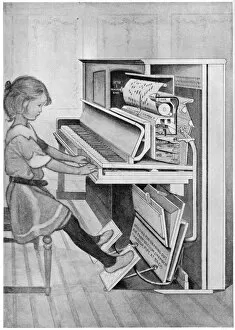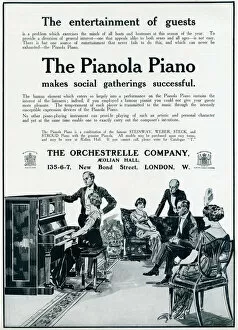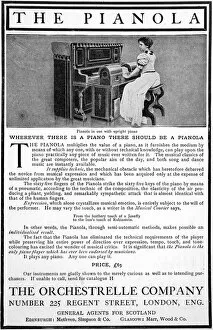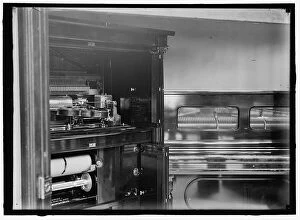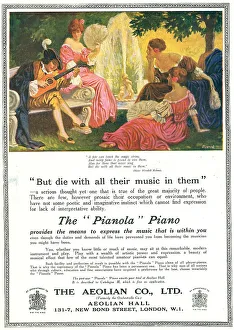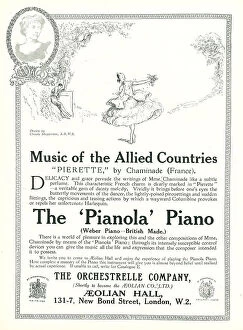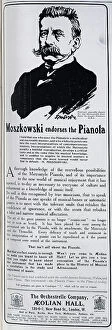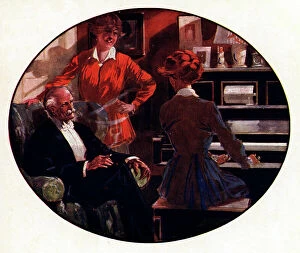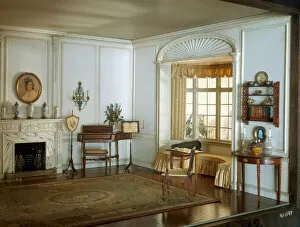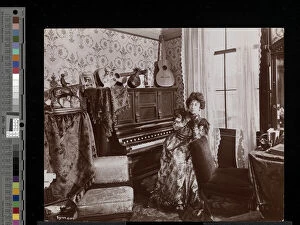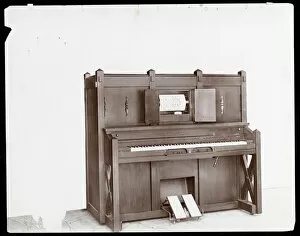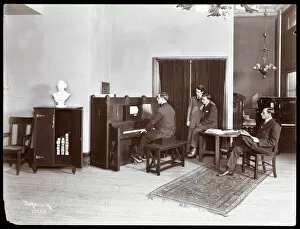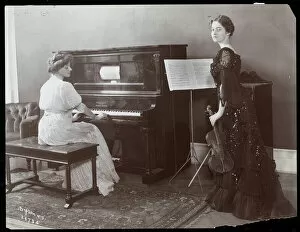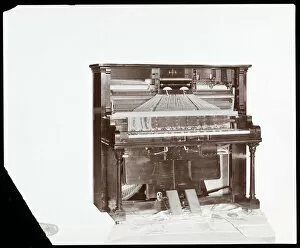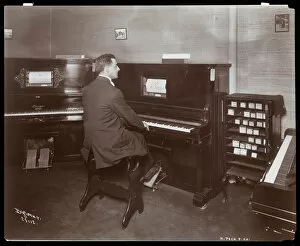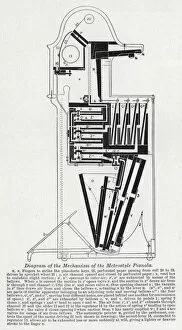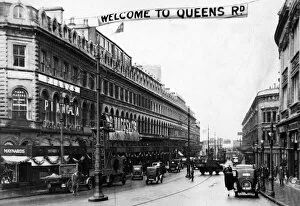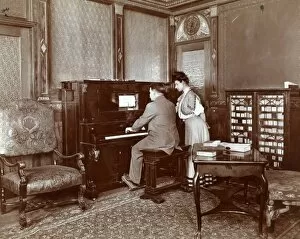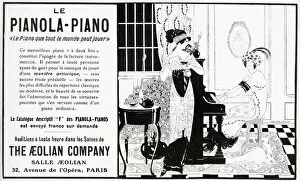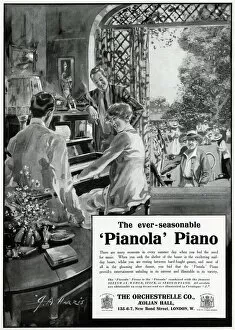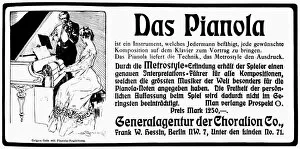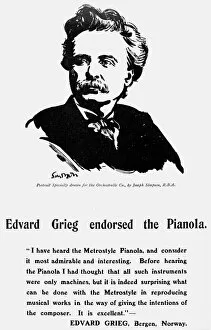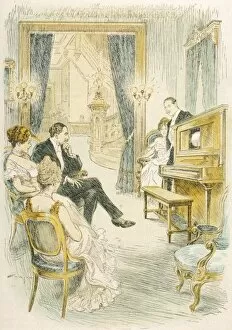Pianola Collection
The Pianola, also known as the player piano, revolutionized music in the early 20th century
For sale as Licensed Images
Choose your image, Select your licence and Download the media
The Pianola, also known as the player piano, revolutionized music in the early 20th century. Introduced in 1895 by the Aeolian Company, this remarkable instrument allowed anyone to play beautiful melodies without any musical training. One of the earliest mentions of the they are be found in a 1912 publication titled "How Pianola Works. " This informative guide provided insights into the inner workings of this mechanical marvel and how it reproduced music with astonishing accuracy. Soon after its introduction, advertisements for Pianolas flooded newspapers and magazines across the country. In a captivating advert from 1913, a family gathers around their new Pianola Piano, experiencing pure joy as they witness its magical performance. The Aeolian Company was at the forefront of promoting this innovative invention. Their numerous advertisements showcased different models and features that made each Pianola unique. One such advertisement emphasized how owning a Pianola could transform an ordinary living room into a concert hall filled with enchanting melodies. Competitors like The Orchestrelle Company also joined in on promoting their own version of player pianos through captivating adverts. These advertisements highlighted not only the exceptional sound quality but also how easy it was to operate and enjoy music on these instruments. As time went on, more companies jumped on board to advertise their own versions of player pianos under various names like "Piano Advertisement" or "The Pianola Company Advertisement. " Each ad aimed to capture potential buyers' attention by showcasing elegant designs and emphasizing how effortlessly one could create beautiful music using these instruments. Whether it was an Aeolian or another brand's model being advertised, one thing remained consistent –the promise of bringing live performances right into people's homes. The convenience and versatility offered by these self-playing pianos were truly revolutionary for both musicians and enthusiasts alike. Throughout history there have been many advancements in musical technology; however, few have had the impact and lasting legacy of the Pianola.

